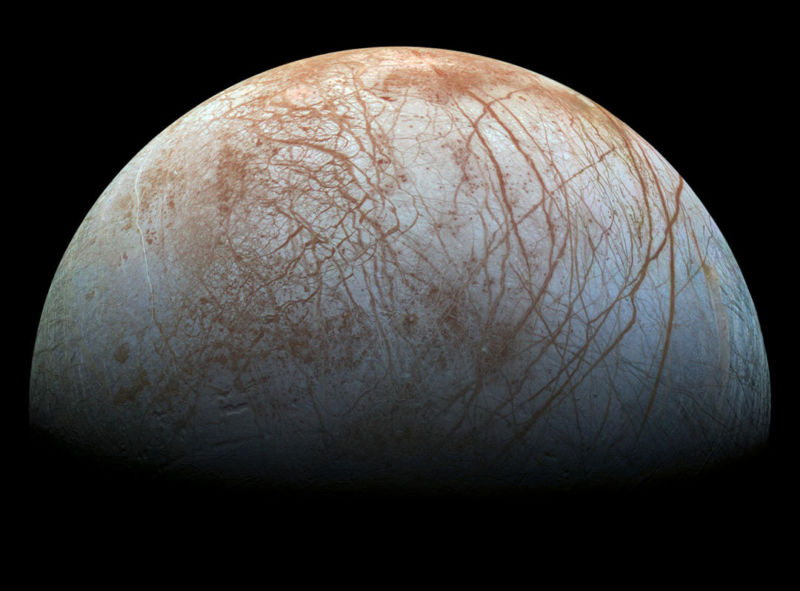
I grew up on space books, Star Trek, and occasionally going to the Santa Monica College Planetarium. Space continues to fascinate me as it does many of us.
So as my daughter has gotten older (she's now almost 5), we've been trying to read some space books together. If you're curious, Ars resident space expert Eric Berger recommended The Jupiter Stone—it's great.
Lately though, my daughter and I have been diving into some more non-fiction works geared towards her age group. We've torn through Astronaut, Caroline's Comets, and The International Space Station. And on occasion, we tip toe into YouTube to learn about NASA and other space agencies.
For instance, this remains my favorite space video of all time. I've watched it probably 10 times.
[embedded content]
Recently, The Kid and I were specifically reading up on the moons of Jupiter, including Europa. This moon is not only is amazing because it is believed to have water and ice, but last year, NASA announced it would be sending a probe in the coming years.
As NASA wrote: "Europa has long been a high priority for exploration because it holds a salty liquid water ocean beneath its icy crust. The ultimate aim of Europa Clipper is to determine if Europa is habitable, possessing all three of the ingredients necessary for life: liquid water, chemical ingredients, and energy sources sufficient to enable biology."
-
Our letter to NASA.
Cyrus Farivar
-
David William's reply, front side.
-
David William's reply, back side.
Cyrus Farivar
Fascinated, we decided to draw a picture of Jupiter and Europa and write a short accompanying letter to Dr. David Williams, whose name is at the bottom of this NASA webpage on Jovian satellites. We included a self-addressed stamp envelope and waited for a reply.
Our message was brief:
Dear Dr. David Williams:
My name is [REDACTED]. I was reading about Europa today with my Papa. We have a question for you: how can we help the Europa Clipper take nice pictures of my favorite icy moon? Love, [REDACTED], Age 4 & Cyrus Farivar (aka Papa), Age 36
To our delight, he recently responded in a two-page, handwritten, letter:
[REDACTED]:
Thank you for writing. I've put in a picture of the Europa Clipper with Europa in the background and Jupiter behind it. This was done by an artist but the real thing should look a lot like this. Europa is one of the most interesting objects in the solar system, because even though it is very, very cold that far from the sun (about 300 degrees below zero!), Jupiter helps keep Europa warm. As Europa orbits around Jupiter, just like our Moon orbits the Earth, Jupiter is so big it actually has enough gravity to squeeze Europa so Europa goes back and forth.
Its shape gets flatter, and then stretches out, and this makes a lot of heat inside, and is also probably why the surface ice is all cracked and has those orange lines. Inside, it may get warm enough to melt the ice and form an ocean of liquid water, so maybe things could live there. We don't know, but we would like to find out. The Europa Clipper is our next step to explore Europa and find out what is under the ice. The Europa Clipper is still being planned, so there isn't much we can do right not, but if you keep following the progress online you'll know how it is coming along. I hope this helped, thank you again for writing.
Your friend, Dave
Dave, you made a kid in Oakland very happy. Thanks, dude. Whatever happens with Europa, rest assured NASA has a pair of fans in the Bay Area who will be following along closely.
Read Again My kid and I wrote a letter to NASA, and a very nice scientist wrote back : https://ift.tt/2N8XnMPBagikan Berita Ini















0 Response to "My kid and I wrote a letter to NASA and a very nice scientist wrote back"
Post a Comment